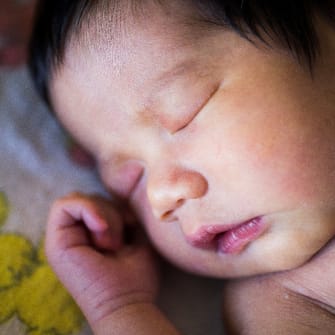
Safe infant sleep updates for 2022: What you need to know to keep your baby safe
Inclined sleepers and crib bumper pads will no longer be made or sold in the United States
This is good news and another step forward in prevention strategies for sleep-related infant death, which is the leading cause of fatalities for babies 1-12 months old.
With these dangerous products finally pulled from the market, babies in our community should be safer already, but take a close look at used or borrowed baby items to make sure they meet current standards.
Hint: If it’s a bumper pad, a product that raises baby’s head while they sleep or a crib made before 2011, it does not meet current standards.
That’s not all that’s happening in infant sleep safety. The American Academy of Pediatrics (AAP) just released their long-awaited 2022 guidelines for reducing sleep-related deaths, a term that includes sudden unexpected infant death (SUID), sudden infant death syndrome (SIDS) and suffocation during sleep.
The most important thing you can do is provide a safe sleep environment. Follow these AAP recommendations for the first year of life to keep your baby safe:
- Place baby on their back for every sleep session, including naps.
- Baby should always sleep on a firm, flat sleep surface.
- Use a crib, bassinet or pack-and-play in the parents’ room, for at least the first six months.
- Make sure your baby’s sleep product meets current federal safety standards (crib standards were updated in 2011, bassinets in 2014).
- Never let a baby sleep on an adult bed, a couch/chair or a surface that raises baby’s head. One exception is when baby falls asleep in the car. But it is important to take them out of the car seat as soon as you arrive at your destination.
- Keep soft objects away from baby’s sleep area — no blankets, pillows, bumpers, soft toys, mattress toppers, fur-like materials, etc.
- Offer a pacifier while baby is falling asleep.
- Dress baby in layers for warmth (instead of using blankets) but watch for overheating —keep hats off for sleep and dress them in only one more layer than you would need.
- Wearable blankets or sleep sacks are a helpful top layer but avoid products that restrict the baby’s movement. Weighted sleep sacks or anything that puts weight on their chest is not safe.
- Stop swaddling for sleep once your baby shows signs that they are ready to roll from back to tummy, typically before 3-4 months old.
The AAP adds the following recommendations beyond the safe sleep environment, as they can also reduce sleep-related death in infants:
- Breastfeed baby if you can; the longer the better.
- Make sure baby is not exposed to smoke/nicotine — smoking one cigarette per day in pregnancy doubles baby’s risk of dying from SUID.
- Avoid alcohol, marijuana, opioids and illicit drugs, during and after pregnancy.
- Obtain regular prenatal care.
- Vaccinate your baby on schedule.
- Provide supervised awake “tummy time” starting when you are home from the hospital and work your way up to 15-30 mins total each day by seven weeks.
- Do not use devices that monitor baby’s heart rate or breathing at home because they do not reduce the risk of SIDS and experts do not recommend them.
- Remember that babies are sensitive to routine, so your best bet is to establish safe routines with your newborn right away, as sleep difficulties are easier to prevent than they are to solve. But late is better than never, so the moment you learn how to keep baby safer, that is your time to start.
Safe sleep isn’t always easy, but your baby is worth the effort.
If you are struggling, reach out to your pediatric provider for support and resources, or to our child safety educators at the Mary Bridge Center for Childhood Safety.